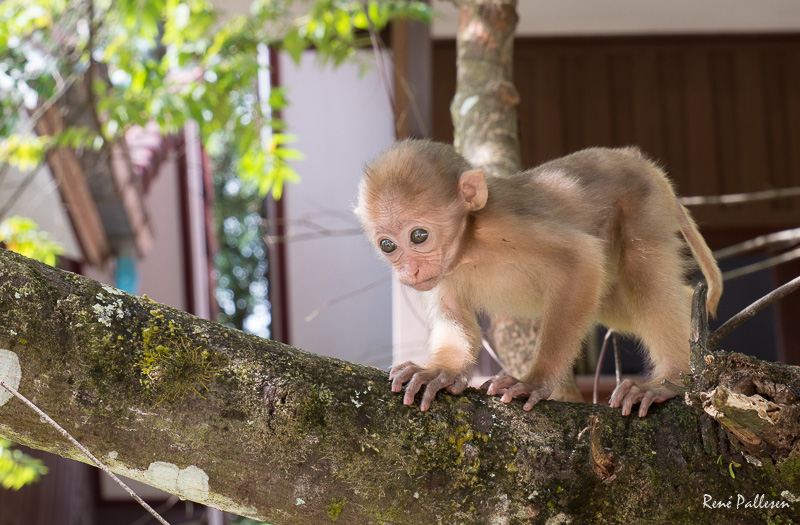4. February 2018 22:02
by Rene Pallesen
0 Comments
A two hour boat ride north of Luang Prabang is the Pak Ou cave. Since we were traveling two families the best way to get there was to hire a slow boat just for us.
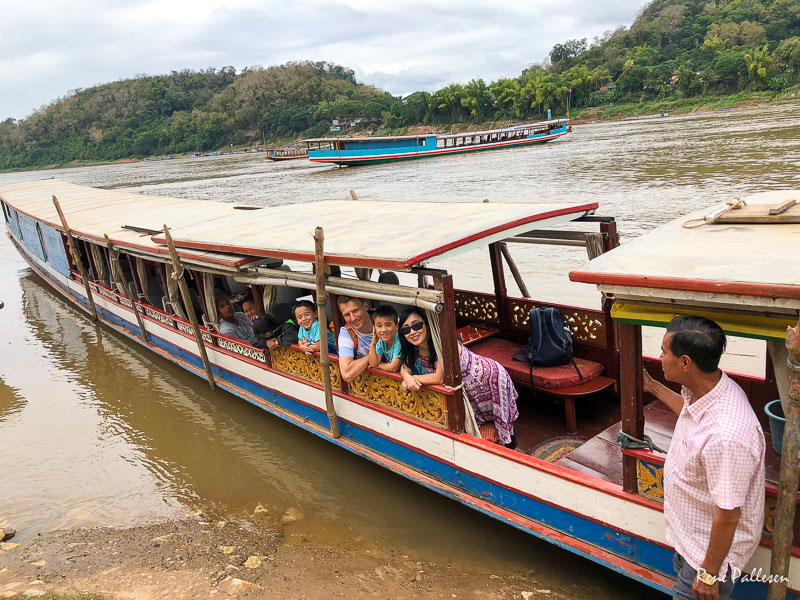
The flow boats are long narrow boats that are ideal for navigating the Mekong River. This part of the river is full of underwater rocks but the boats seem to navigate these treacherous waters with ease.
Having the boat for ourselves gave us more flexibility with regards to how long we wanted to spend at the cane and also meant that we have more room to move around.
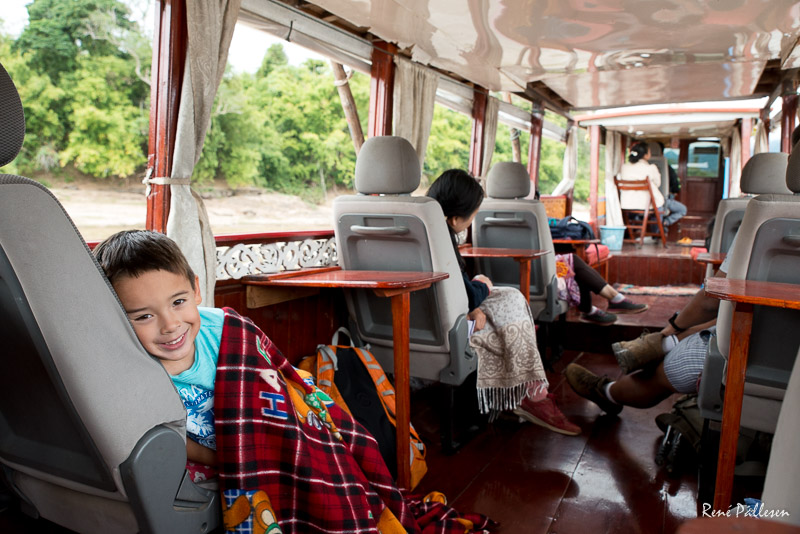
The front of the boar is where the captain sits and steers the boat. After this there is a section for the passengers followed by a small pump toilet and then the living quarters for the captain and his family. Out the back there is a small kitchen for them to do the cooking.
The cave is upstream into an area full of limestone mountains.
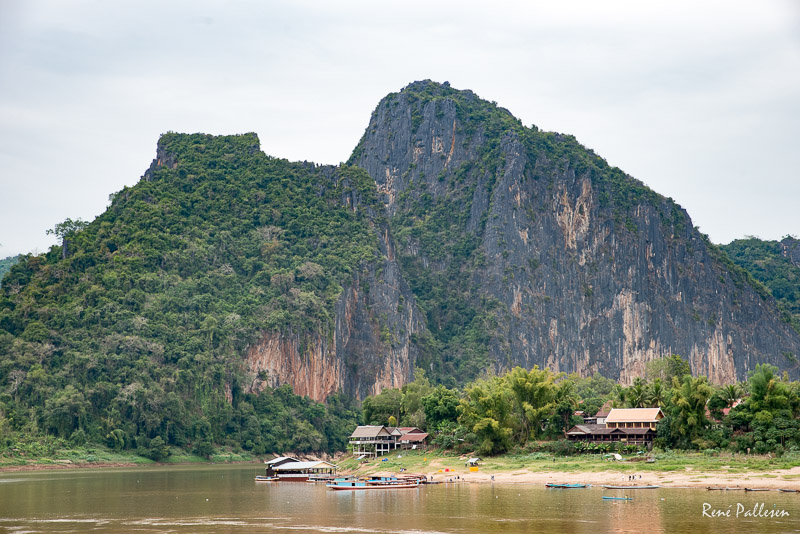
The many boats moor at a long and wobbly floating bamboo bridge that takes you to the cave itself.
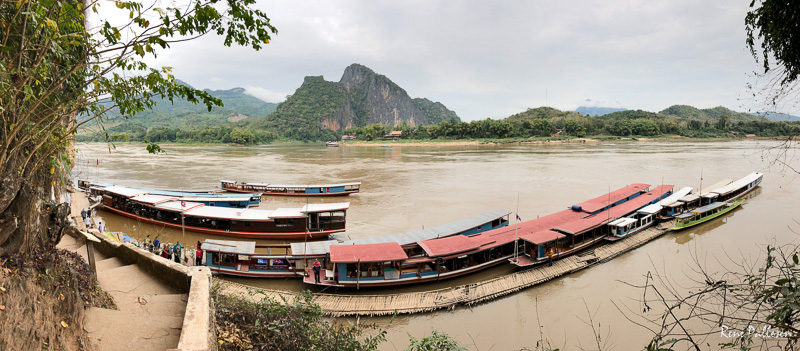
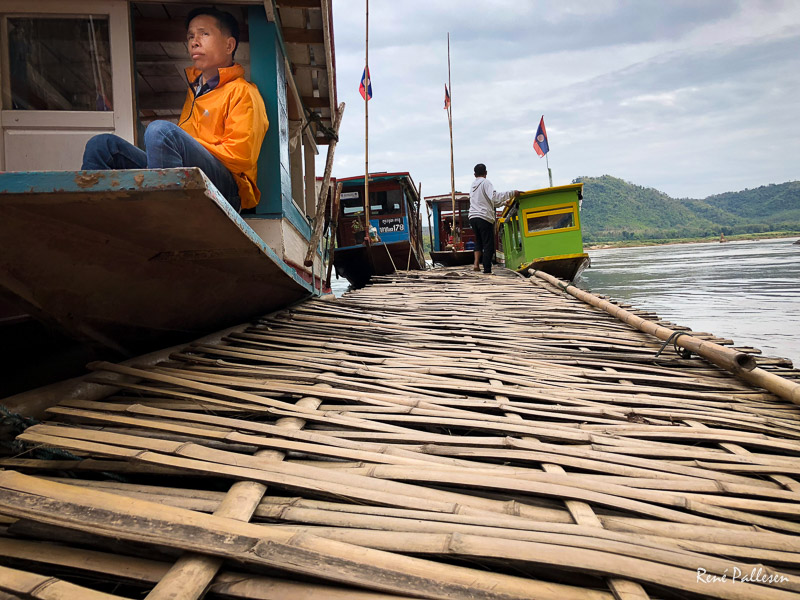
The cave itself is not big but it is full of small Buddhas that have been put there over hundreds of years. You can tell that this used to be an important place of worship.
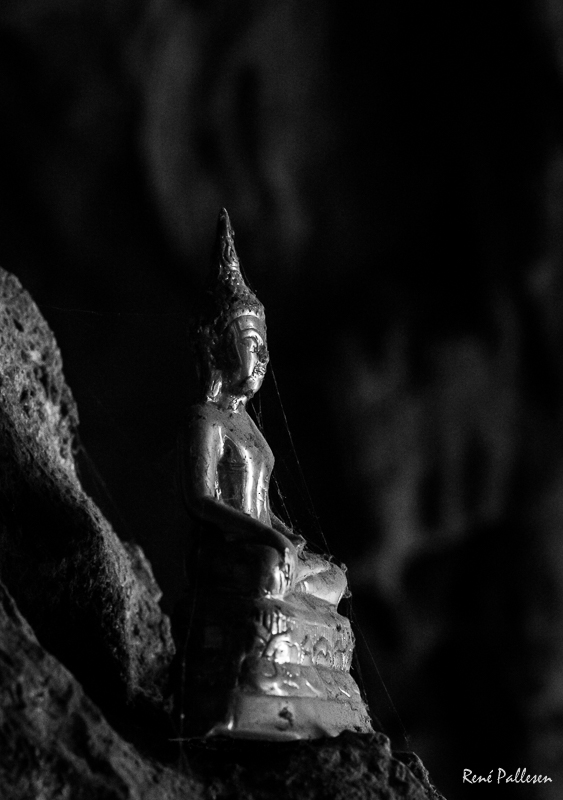
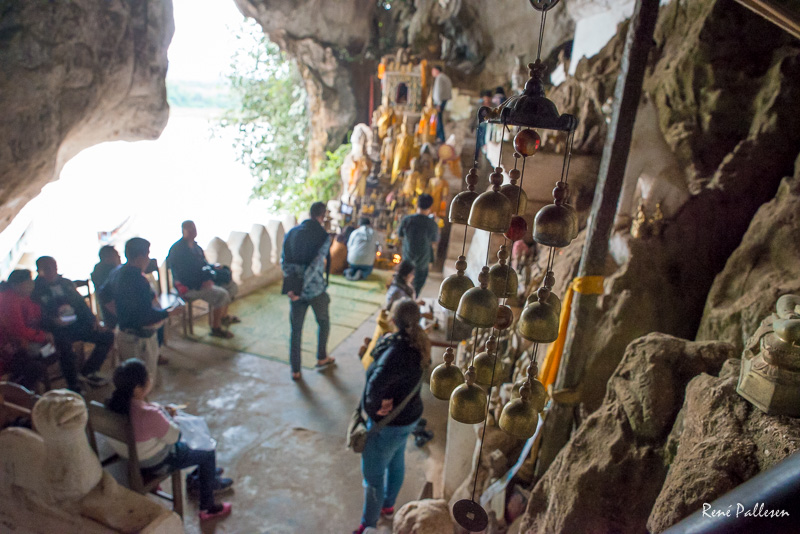
Now however the place is so crowded with tourists (guilty here too) coming in on boats that it is hard to move around. I could not stop myself from taking this photo of Buddha holding up his hands to stop more boats arriving.
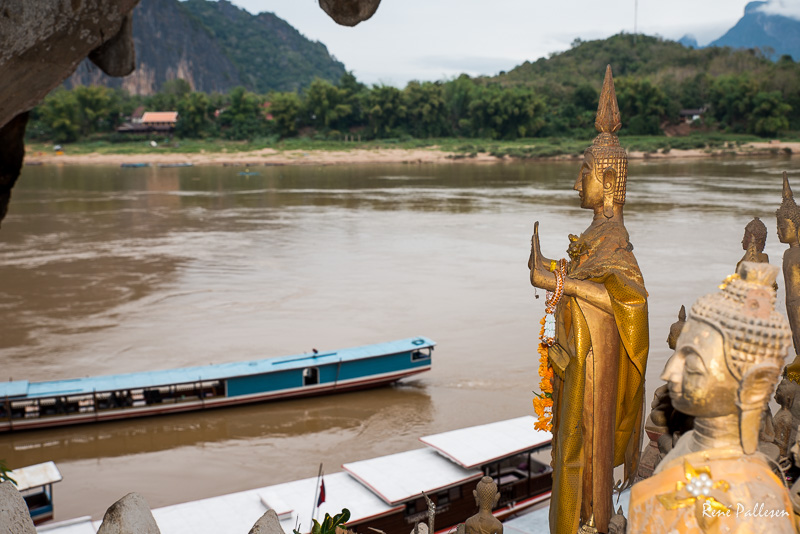
At the top of the hill the hill there is what I think is a more 'pleasant' cave. It is equally interesting and much less crowded because most tourists don's make it up the many steps to the top.
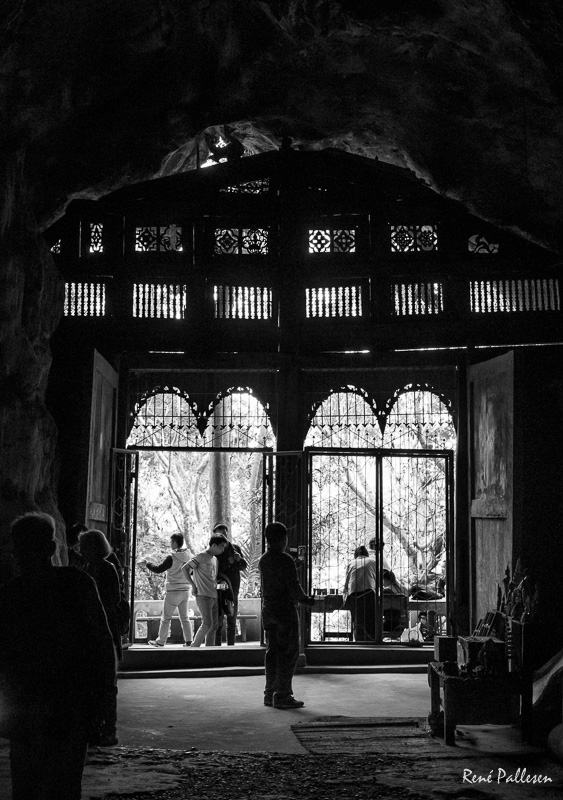
4. February 2018 16:03
by Rene Pallesen
0 Comments
3. February 2018 15:03
by Rene Pallesen
0 Comments
2. February 2018 00:02
by Rene Pallesen
0 Comments
1. February 2018 23:02
by Rene Pallesen
0 Comments
Luang Prabang is without a doubt the cultural highlight of Laos. The old part of the city is beautiful and there are good reasons why is has been heritage protected.
I believe it has the most beautiful temples of South East Asia - they are not the largest or even the oldest, but the amount of details that has been put into them is absolutely stunning.

In addition to this there are a lot of other very interesting things to see in and do in the city, which I will cover in later posts.
The city itself is situated between two rivers where one of them is the Mekong which is still fairly busy with slow boats and ferries (The chinese are building a large bridge across the river north of the city)
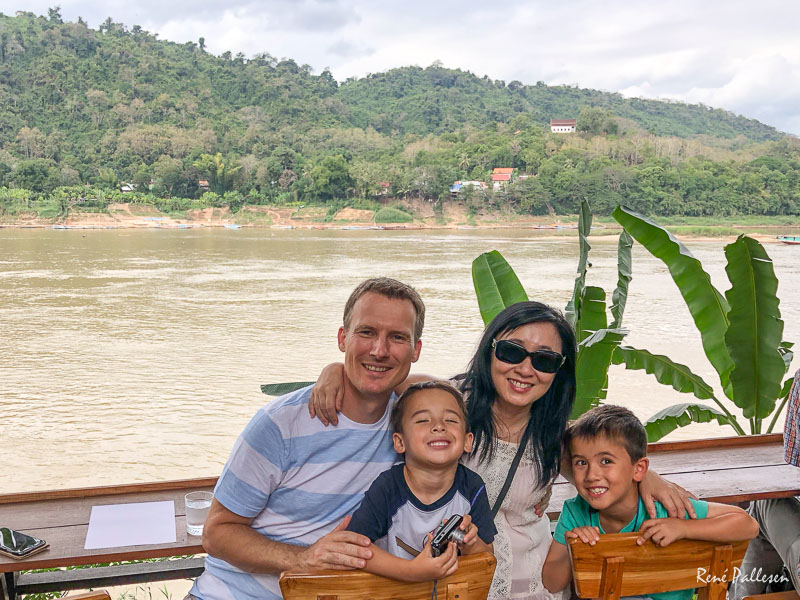

The section between the two rivers form the city itself which consist of four parallel streets each about a kilometer long.
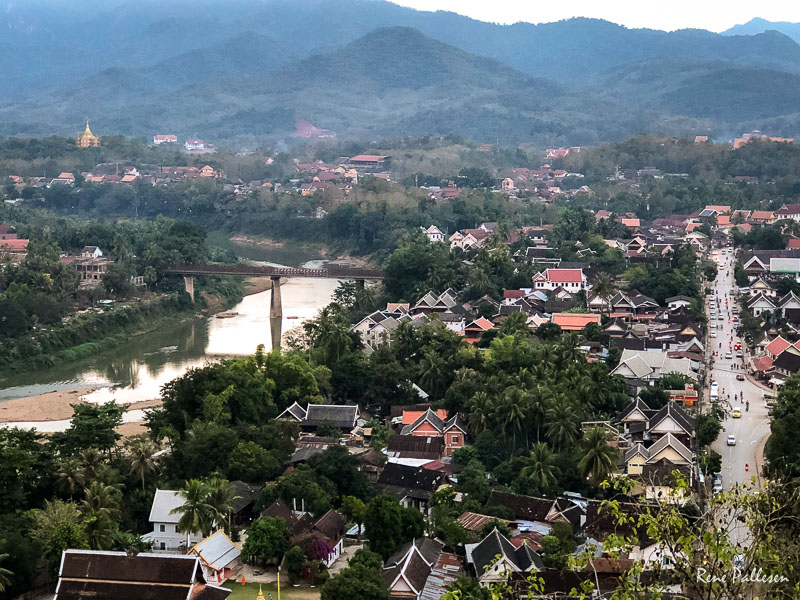
Everything within the city itself can be covered on foot and in the evening the main streets are blocked for card and reserved for pedestrians.
The place is dominated by a big hill with a small temple and stuba on top. It is very popular with tourists to climb the hill around sunset. And there is a great view of the mountains from the top.

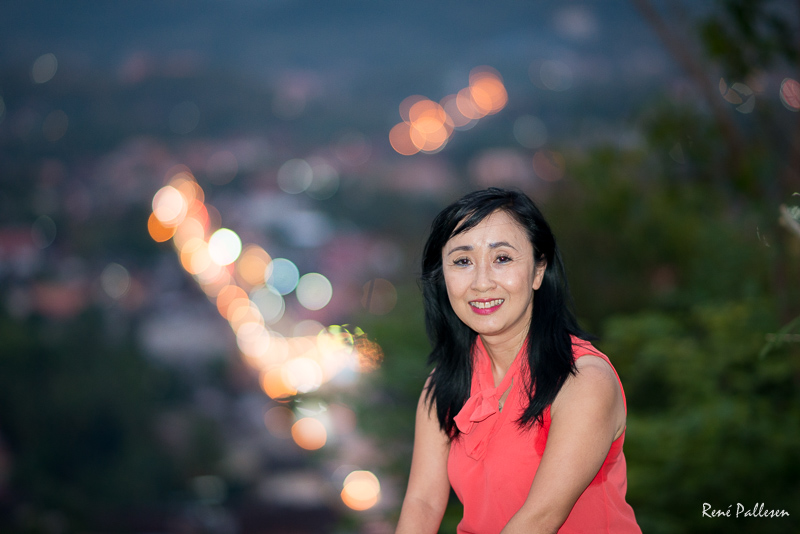
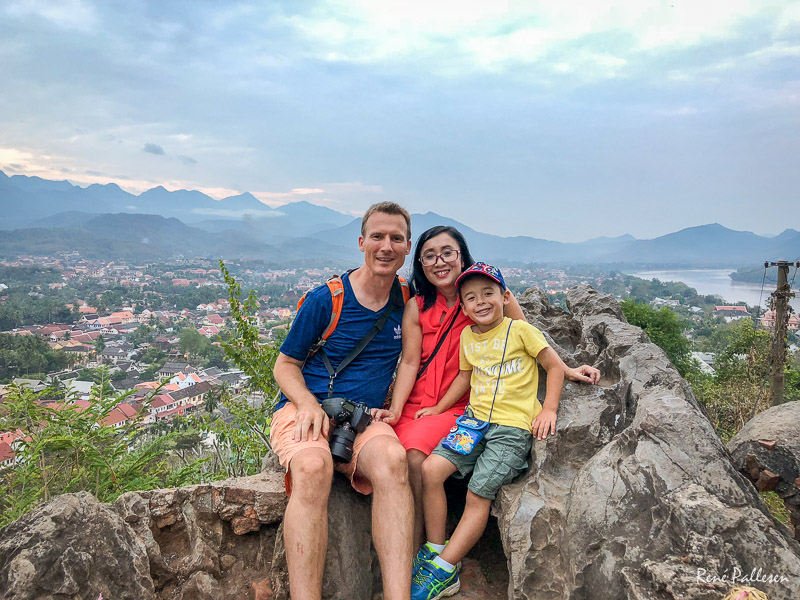
There are some things that have changed in the city since I was there the last time. The most noticeable is the amount of tourists and fine hotels - and here it is really the more wealthy middle aged Europeans you see. The main street of the old city is full of modern western European influenced restaurants, souvenir and antique stores.

Fortunately you don't have to travel further that to the parallel streets to fine more low key Laos places to eat.
Also, last time I visited, I stayed in a small guest house near the city centre called Tanoy Guest House. When I stayed here I became good friends with the family and the place was named after the oldest daughter who's name was Tanoy.
The place is still there and apart from a larger fence it looks pretty much unchanged.

29. January 2018 21:01
by Rene Pallesen
0 Comments
The 'secret' war in the 60's and 70's had a major impact on the country. A massive amount of bombs were dropped by mostly the Americans in mostly the Northern and Eastern part of the country. This was partly an internal civil war but also to stop the North Vietnamese using the country as a supply route.
To get an insight into this was I can highly recommend the books by Christoper Robbins called 'The Ravens' and 'Air America'.
The impact today is that un-exploded ordnance (mines, cluster bombs etc.) is covering large parts of the country and that every year lots of people including children gets injured or killed.
It is also very noticable, especially in the Hmong villages that there is no presence of old men. This is because most of these were killed either during the war where especially they took heavy casualties despite the American support or through 'education' camps after the war.
Last time I went to Laos I went to Plains of Jars which was one of the most heavily bombed areas and the debris was everywhere. We weren't going there on this trip, but to give the family and friends an insight into the history and the dangers to present people we visited the COPE organisation in Vientiane.
Here is Aiden in front of an unexploded (disarmed) clusterbomb. Looks just like a ball and tempting for kids to play with.
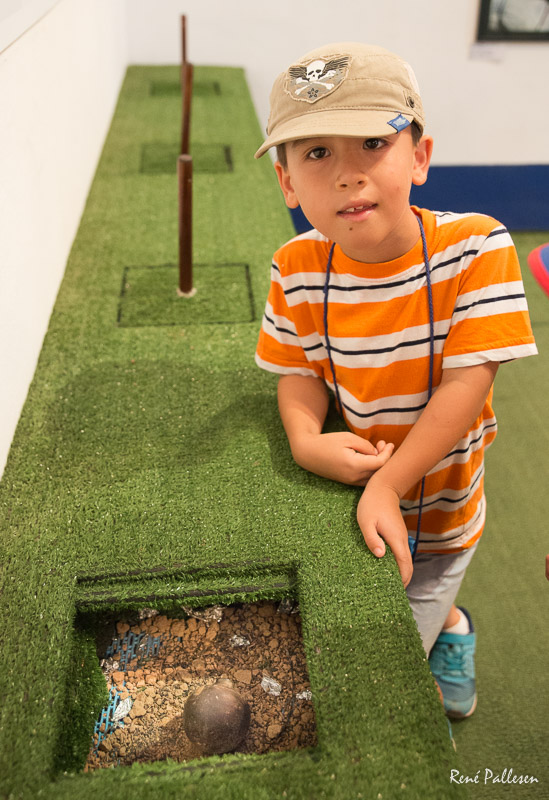
These were dropped from canisters on aircraft with several hundred in each load. It is estimated that 1/3 of these didn't explode on impact.

This map shows the areas most effected.
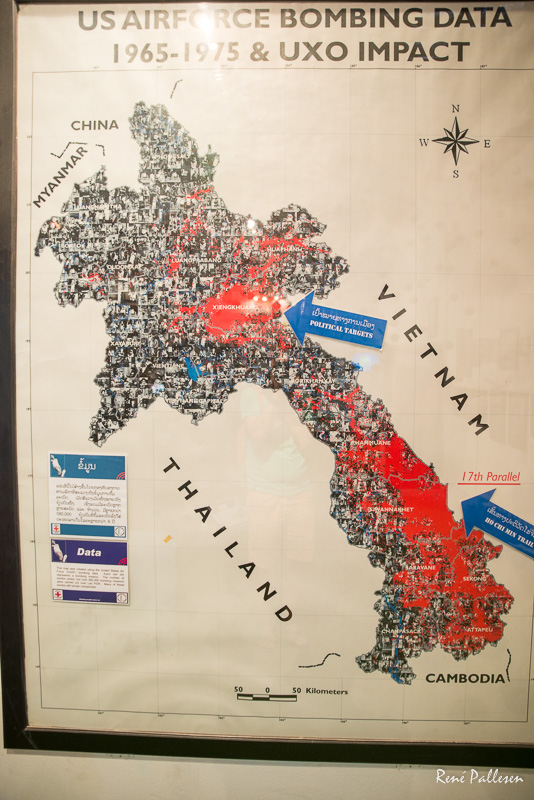
If you look for the bombs they you see them everywhere - mostly disarmed and used as fence posts.
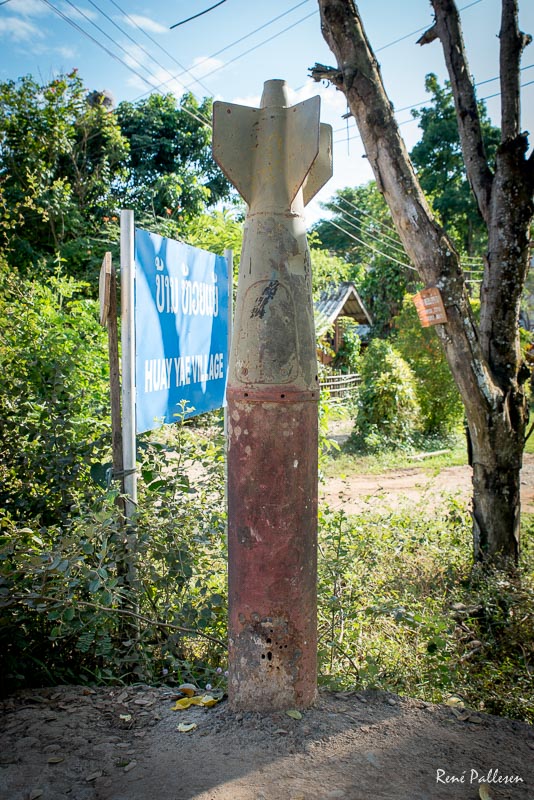
There is also remains of anti aircraft guns such as this one in Luang Prabang. The barrel had been removed but everything else still worked on it and they could turn it by rotating the handles, much to the amusement of the kids. During the war kids only a little older than our kids would have been fighting at the front lines.
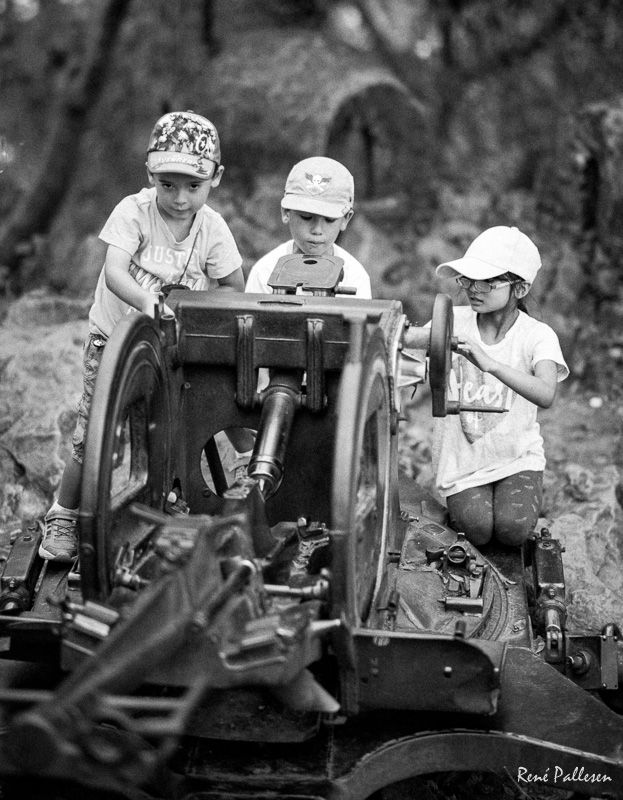
18. January 2018 19:01
by Rene Pallesen
0 Comments
16. January 2018 21:03
by Rene Pallesen
0 Comments
One thing that I love taking photos of on my travels are People.

A lot of the photos of the people of my travels are in the other posts, but here is a selection that didn't really fit into the other stories.
This is an old woman sitting doing preparing food or doing her handicraft outside her house while observing the street life.
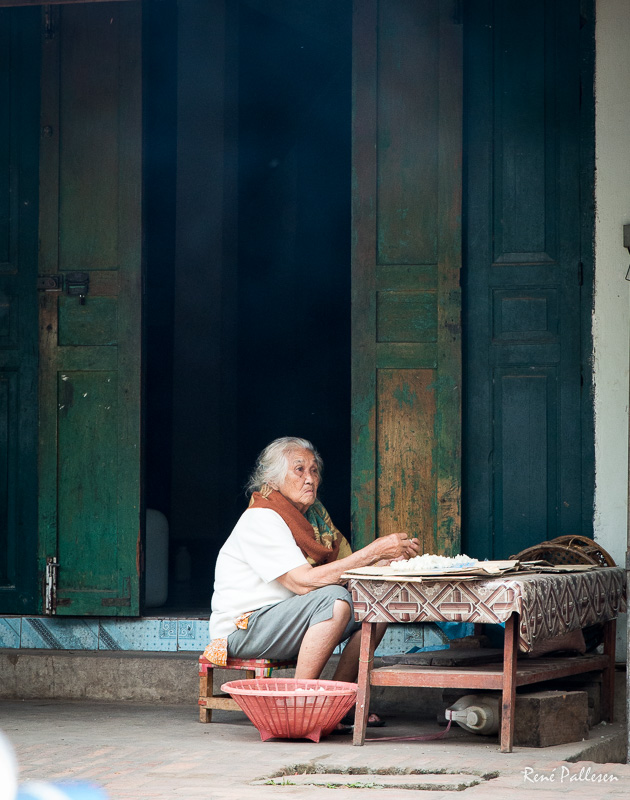
Someone was shooting a wedding, I used the opportunity to snap a photo of my own.
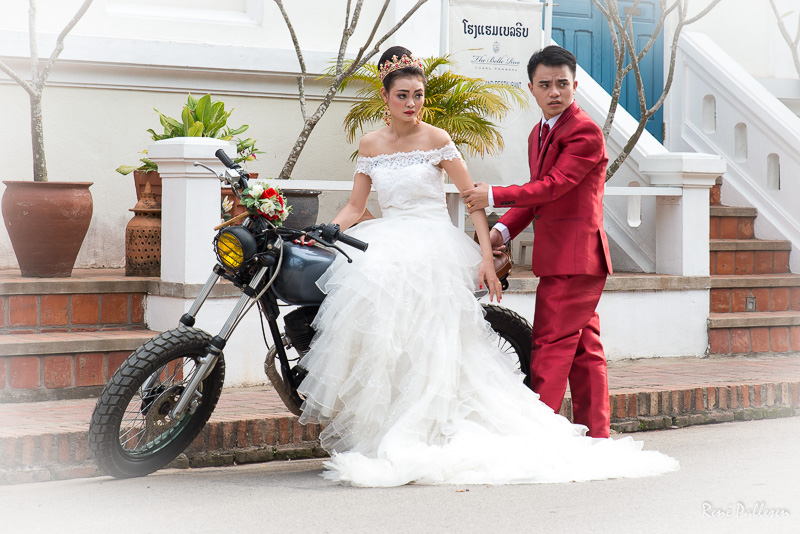
A woman bathing in the Mekong

A girl posing for her boyfriend on top of the hill at Luang Prabang
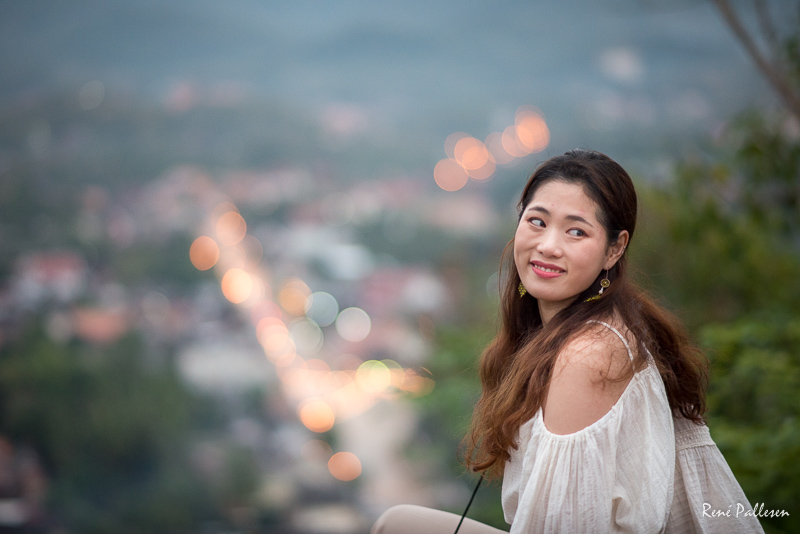
A woman walking down the street
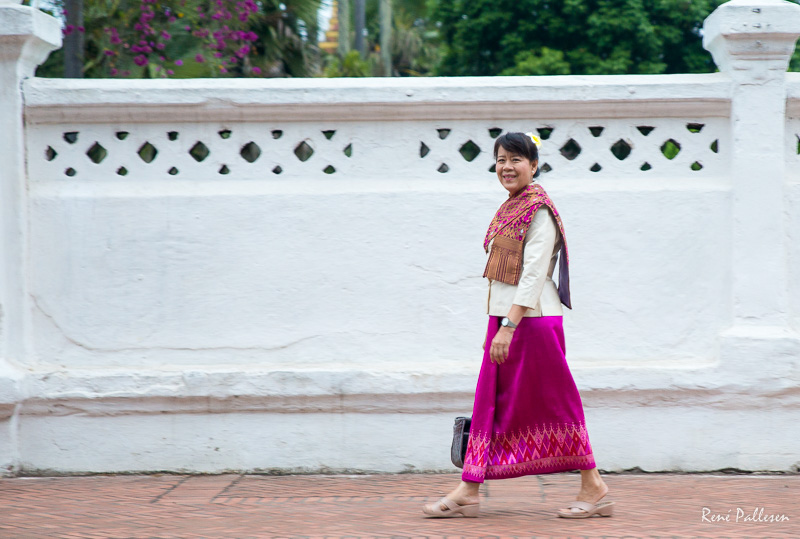
Another woman doing handicraft outside her shop
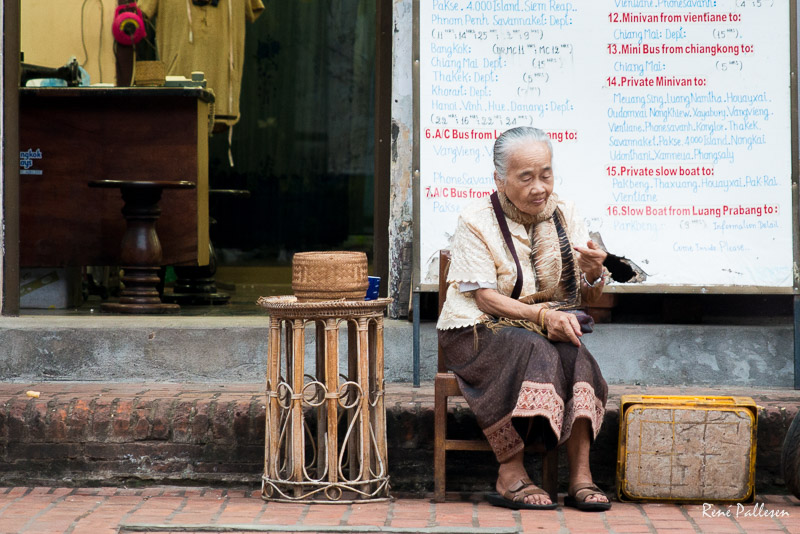
12. January 2018 00:02
by Rene Pallesen
0 Comments
11. January 2018 19:01
by Rene Pallesen
0 Comments
Some of the other highlights for the kids in Vang Vieng was the gym at our hotel. The local guys used it to train for kick boxing and the kids felt inspired.
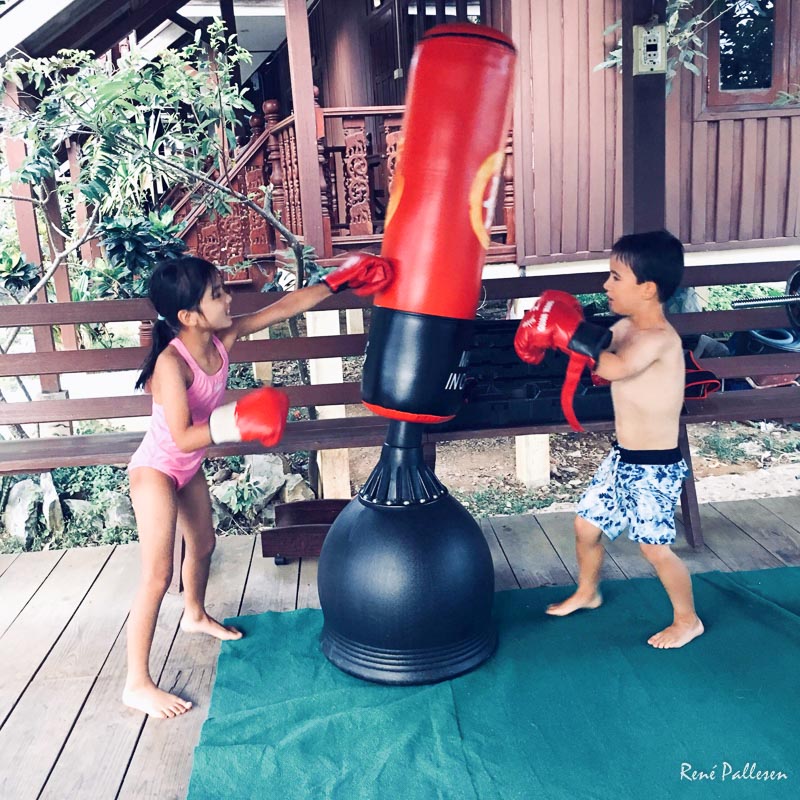
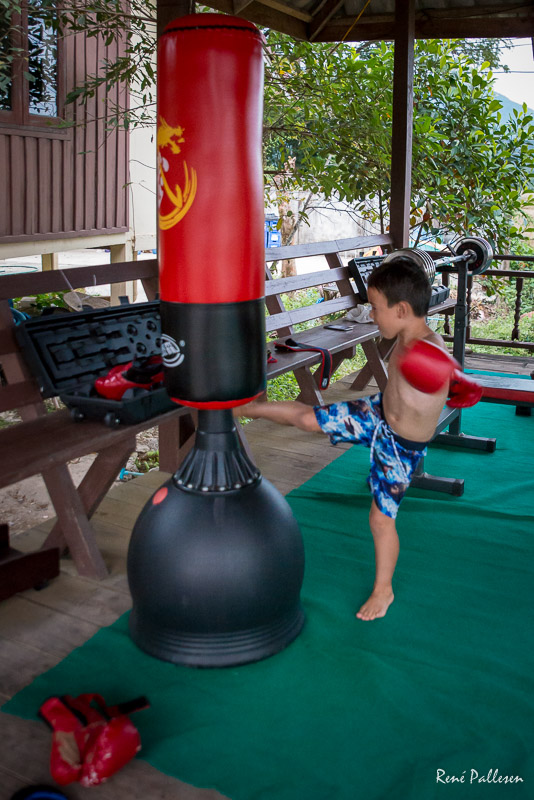
Also, one evening we spotted someone launching wishing lanterns. We asked where they came from and through a lot of pointing we found a local shop keeper selling them.
We bought one and launched it an the kids loved the experience.
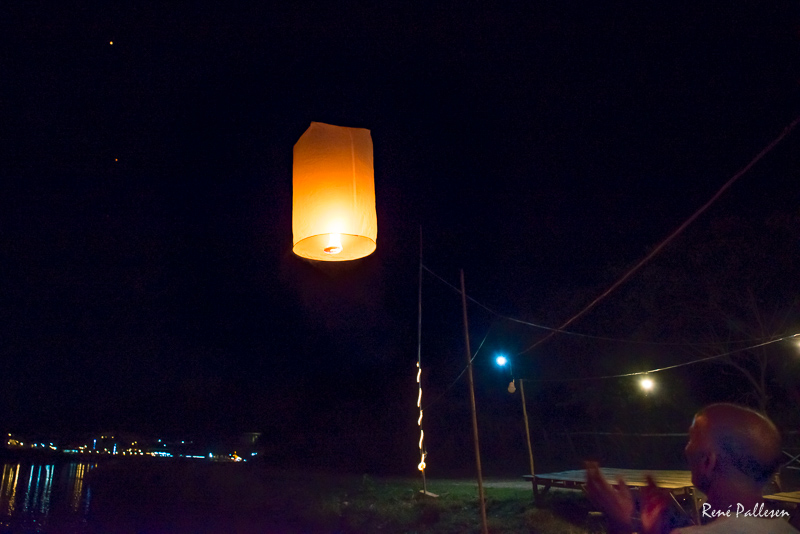
Also, one of the trees at the hotel had two little monkeys staying there most of the day. The kids loved standing there shouting profanities at them.


